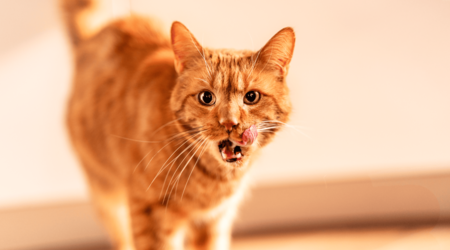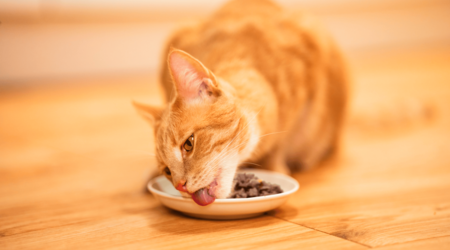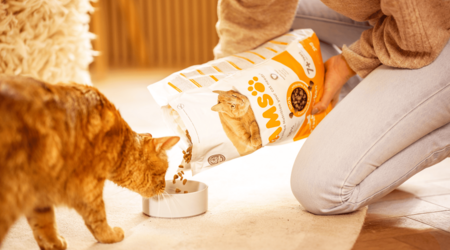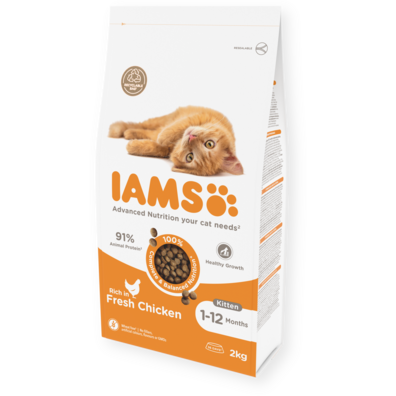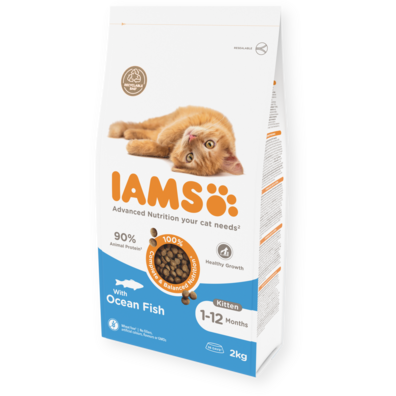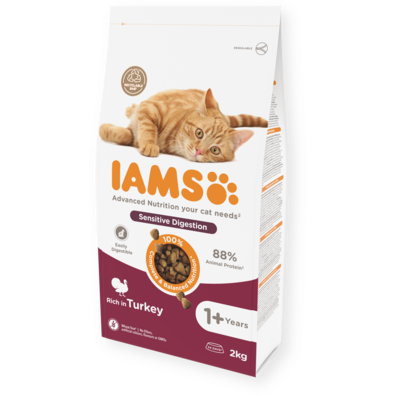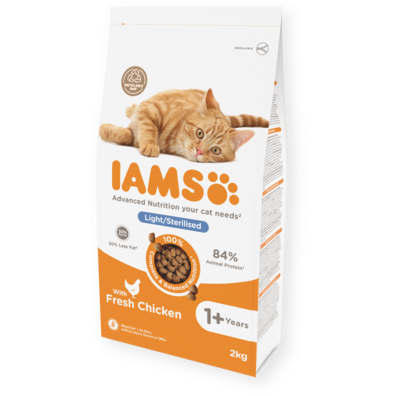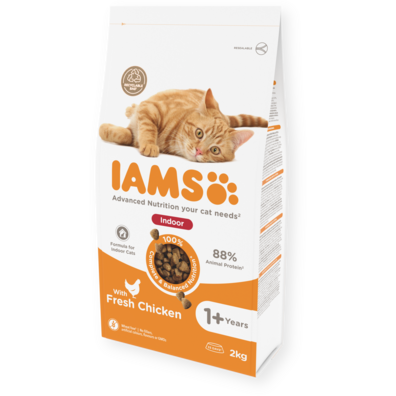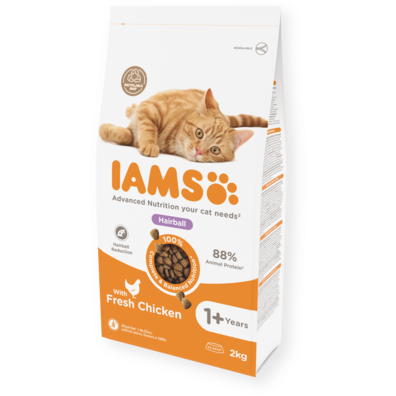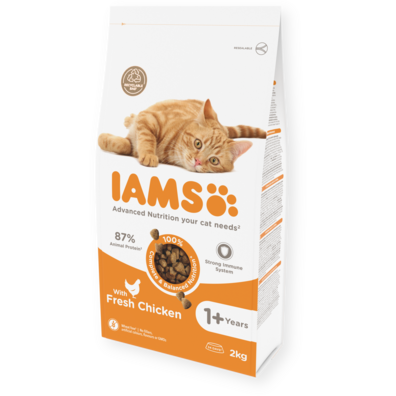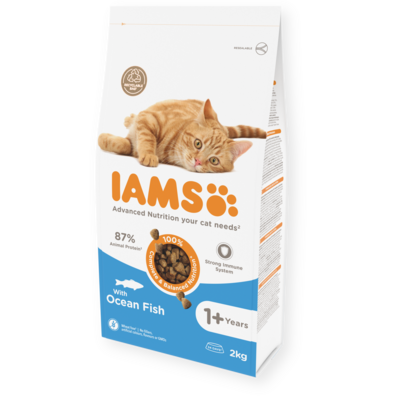What is the difference?
Wet versus dry cat food
Choosing the right nutrition is one of the most important decisions for your cat’s health and overall wellbeing. Among the most common questions cat owners ask is whether wet cat food or dry cat food is the better option. Each type of food has its own benefits and understanding the differences can help you decide what works best for your cat.
-
Wet cat food provides more moisture and supports hydration; dry cat food is calorie-dense and convenient to store and portion.
-
Wet food is ideal for picky eaters, kittens, seniors or cats with dental issues.
-
Dry kibble can support dental health and works well for free-feeding and food puzzles.
-
Both options offer different benefits — the best choice depends on your cat’s health, age and preferences.
-
Many vets recommend mixed feeding to combine hydration and convenience.
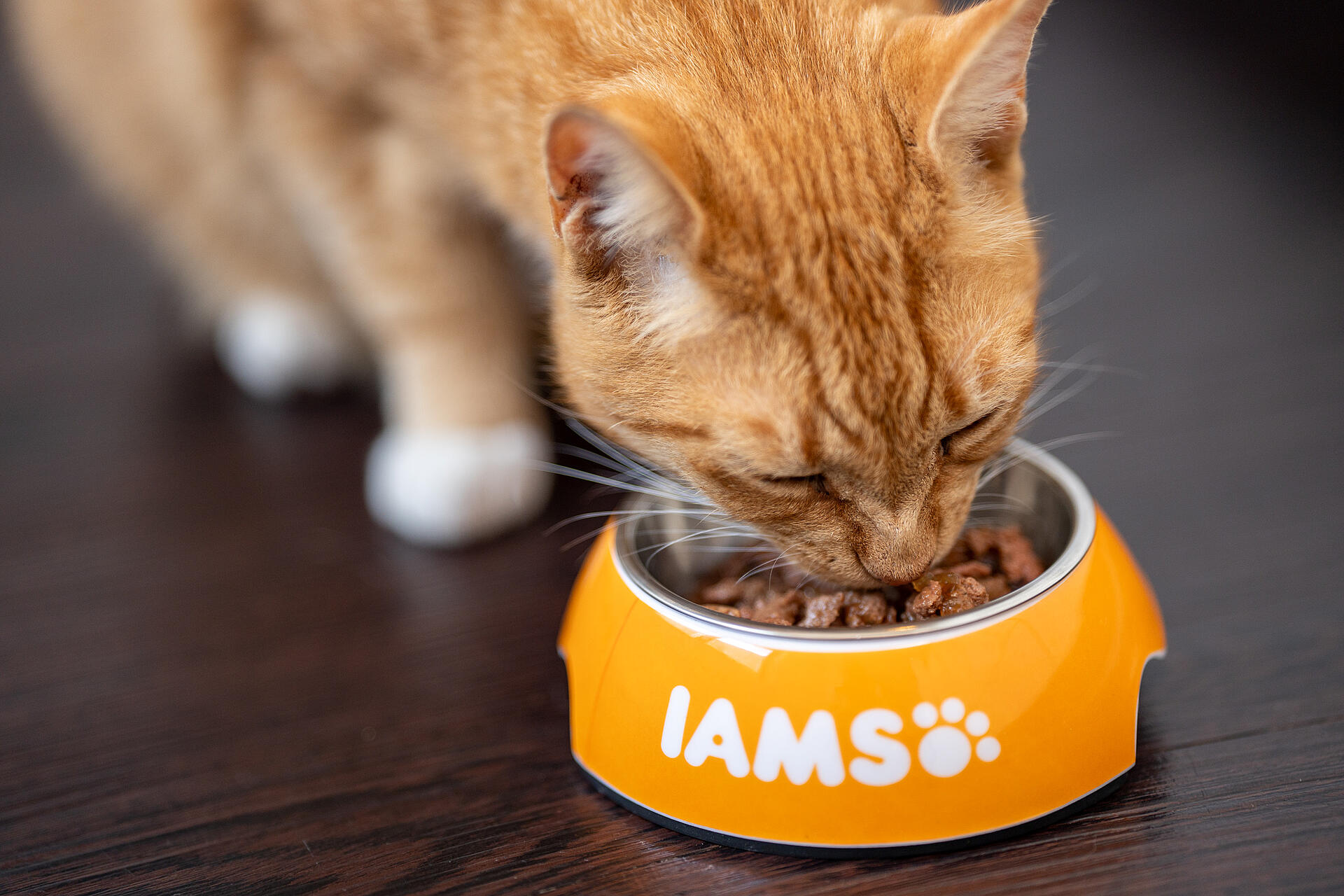
Nutritional differences
The key differences between wet cat food and dry cat food are mainly in moisture content, nutrient density and energy per portion:
Moisture content:
- Wet cat food (pouches or tins) contains around 70–80% water, which helps support hydration. Cats eating wet food still need additional water, but typically less than those eating only dry food.
- Dry cat food (kibble) usually contains only 6–10% moisture, so cats need to drink more additional water alongside their meals.
Nutrient density:
- Wet food has a lower calorie density per gram, meaning cats need larger portions to meet their energy needs.
- Dry food is more calorie-dense, so smaller amounts provide the same energy.
Texture and taste:
- Wet cat food is soft, aromatic and highly palatable, making it especially appealing for picky eaters.
- Dry cat food offers a crunchy texture, is easy to portion and stays fresh longer once opened.
Feeding impact:
- Wet food is particularly beneficial for cats that do not drink much water on their own.
- Dry food is convenient for free feeding and works well with interactive feeding toys or food puzzles.
Together, these differences show that both wet and dry food have unique strengths, and the best choice depends on your cat’s health, lifestyle and preferences.
Benefits of wet cat food
Wet cat food has a high moisture content, which helps support hydration—especially for cats that drink little water on their own. Its soft texture and strong aroma make it appealing for picky eaters and easier to chew for kittens, senior cats, or cats with dental concerns. While not all wet foods are complete and balanced, IAMS wet cat food is specially formulated to provide complete and balanced nutrition for cats at every life stage, making mealtime both convenient and nutritionally reliable.
Benefits of dry cat food
Dry cat food, or kibble, is valued for its practicality and convenience. It’s easy to store and serve, making it ideal for busy households or multi-cat homes. Dry food also has a longer shelf life than wet options, staying fresh for weeks when kept in a sealed container once opened.
Portioning is straightforward, which helps maintain a consistent diet and prevent overeating. Its crunchy texture can support dental health by helping to reduce plaque buildup. For cat owners, these advantages make dry food a convenient complement to wet options.
What do vets recommend?
There isn’t a one-size-fits-all answer when it comes to choosing between wet and dry cat food. The best option depends on your cat’s age, weight and overall health.
Many veterinarians recommend a combination of wet and dry food to take advantage of the benefits of both. This approach helps support hydration while providing the convenience and dental benefits of dry kibble. For more guidance on this method, see our guide on “Mixed Feeding with IAMS".
Conclusion
Both wet and dry cat food have their own advantages, from hydration and palatability to convenience and portioning. When choosing cat food, quality matters most. High-quality products, such as those offered by IAMS, provide complete and balanced nutrition for cats at every life stage.
For cat owners who want the best of both worlds, a combination of wet and dry food is an excellent option.
FAQ
It depends on your cat’s age, weight, and activity level. Check the feeding guidelines on the wet cat food packaging and adjust portions as needed to maintain a healthy weight.
Many veterinarians suggest including wet food in your cat’s diet, especially for cats that drink little water. Wet food supports hydration and can be easier to eat for kittens, seniors or cats with dental issues.
Most cats do well with two portions of wet food per day. You can combine it with dry food for a mixed feeding approach, which offers flexibility and variety.
It’s normal for cats to have a low thirst drive, but adequate hydration is essential for their health. If your cat doesn’t drink much water, including wet cat food in their diet can help increase fluid intake and support kidney and urinary tract health. If you’re concerned about your cat’s hydration or notice signs of illness, it’s best to consult your veterinarian for guidance.
